MatchUp Read online
Page 8
He could see something else too, as his eyes became increasingly accustomed to the dimness in here. One entire wall of the room was full of rows of glassed-in shelving, like in a museum. Lined along each row of shelves were perfectly preserved human feet.
“Rodney Tidy?” Grace asked.
“Help . . . me.”
The voice was weak and parched, more a faint croak.
Grace ran forward, and it took him only moments to realize why the man was motionless.
Arms, hands, the back of the head, shoulders, and the entire spine were all bonded to the chair.
With superglue.
LEYTON GRAY, ACCOMPANIED BY HIS solicitor, an intensely serious woman in her early thirties, sat opposite Carol Jordan and another colleague in the small, starkly furnished interview room.
For the benefit of the CCTV recording Jordan announced, “DCI Carol Jordan and DS Paula McIntyre interviewing Leyton Gray under caution in the presence of his solicitor, Susan Ansell. The time is 10:05 a.m., Wednesday, July twelfth.”
Then she leaned forward. “Mr. Gray, can you tell us your relationship with Mr. Rodney Tidy?
“Rivals. We’ve always been rivals.”
Ignoring his solicitor’s signals for him to keep quiet, he went on.
“I had to stop him. I had to, somehow. He always beat me to the best feet. He just always did. He told me once how much he loved to stare at feet. That he loved nothing more than to sit in a room and look at his latest trophies. So I obliged him. I’ve stopped him from ever getting to feet ahead of me again, and he gets his dream, to sit and look at feet. Did you see his own up there? They’re not exactly beautiful, but I thought it would be a nice touch. That is, of course, if he’s smart enough to understand my signal. Rodney, old boy, you’ve been de-feeted.”
KATHY REICHS AND LEE CHILD
I WAS FIRST PUBLISHED IN 1997 when Killing Floor introduced the world to a quiet wanderer named Jack Reacher. Kathy Reichs also came along in 1997 when Déjà Dead brought us forensic anthropologist Temperance Brennan.
Kathy freely admits that both she and Temperance have the same curriculum vitae. Getting the science right is important to Kathy, and she routinely turns to her own real-life experiences as a forensic anthropologist when writing a Temperance Brennan adventure. With Reacher I’m constantly asked if he’s based on me. Truth be told, there’s a lot of me inside him. It’s almost unavoidable that a character created by a writer not be a little autobiographical. Reacher is pretty much a wish fulfillment for both me and the reader. What I (or they) would be, if we could all get away with it. How he acquired his name is simple. Both I and Reacher are tall. So back in the 1990s, while writing Killing Floor and grocery shopping, my wife remarked that “if the writing didn’t work out I could always be a reacher in a supermarket.”
Talk about fortuitous.
In creating our story, Kathy and I both agreed on the rough outline, then we wrote in turns. She likes things all planned out. I prefer to wander. But we found a happy medium in which to work. I must confess to being a little nervous working with her, given her reputation for thoroughness, but we discovered that our actual writing styles are somewhat similar. This sometimes happens with collaborations. It helped that we’ve both written screenplays. Kathy with the television series Bones, which is based on her characters, and myself with my daughter. There’s a process to fashioning a screenplay that’s different from crafting a novel. Much more give-and-take is there between the various contributors, since rarely is a screenplay written by only one person. Luckily, we were both comfortable with that process.
And the result is an intriguing adventure that involves—
Faking a Murderer.
FAKING A MURDERER
WEDNESDAY, FEBRUARY 22, 0940 EST
“OVER THE PAST DECADE, THIS academy has taken a good hard look at itself. We have evaluated the theory and methodology underlying each of our disciplines. Formalized statements on ethics. Developed clear and open paths toward board certification.”
The hall was dim, the stage blazing like a Hollywood set. She could see little from the podium. Rows of shadowy heads. Here and there, a triangle of white bisected by a tie. A wink of reflection off a plastic-sheathed badge.
“No longer can unqualified individuals hang out their shingles, call themselves experts, and practice without oversight. Without adherence to rigorously verified standards.”
The other speakers sat behind her in well-behaved silence. To either side of them, screens displayed projected images of the logos of the American Academy of Forensic Sciences and the Marriott Wardman Park Hotel. Flanking the screens were stairs to ground level.
“This year’s conference is titled ‘Reliable Relevant and Real Forensic Science.’ Anthropology. Pathology. Toxicology. It doesn’t matter the section. That trifecta is the goal of everyone here.”
At the base of each set of steps, an electrified sign indicated an exit. In her peripheral vision, she noticed two men shape up in the red radiance shed by the one to her right.
“As each presenter in this plenary session has so aptly demonstrated, we are working hard to achieve that goal. For law enforcement. For the courts. For justice. I thank you for your attention. And I wish you an informative and enjoyable conference.”
There was a swell of applause as the houselights came up. More than the usual courteous clap. Long and heartfelt. Those behind her rose and gathered their notes, faces saying they were pleased with themselves. And relieved. The presentation had been well received by a very tough crowd. Their colleagues. The audience began to disperse. The aisles filled and the murmur of voices picked up volume.
As she closed her laptop, the two men climbed the treads and crossed toward her. Each wore a navy suit, white shirt, and tastefully understated tie. Black socks, shiny shoes.
Approaching the podium, the pair fanned out slightly. The guy who stepped left was tall and burly and had a nose that looked like it might have been broken. More than once. His shaved scalp gleamed like polished mahogany under the stage lights.
The guy who stepped right was close to her height. He had heavy dark brows over very small eyes, thick black hair, olive skin.
“Dr. Temperance Brennan?” Dark Brows’s voice was surprisingly deep for a man of his size.
“Yes.” Guarded. She suspected their purpose, accepted consults only through formal channels. “And you are?”
“Special Agent Pierre Dupreau.” Displaying a badge to prove it.
“Bonjour,” she said.
No hint of a grin.
“I speak English,” she said.
Nope.
She looked at Broken Nose. He badged her with the same wrist motion employed by his partner. Special Agent Byron Szewczk. She wondered if Szewczk envied Dupreau his abundance of vowels.
“Are you armed, Dr. Brennan?” Dupreau, little eyes scanning her body for telltale bulges.
“Excuse me?”
“Are you carrying a—”
“The question was clear. I want to know why you posed it.”
Sensing tension, a few stragglers eyed them while pretending not to.
“We’d like you to come with us,” Dupreau said, voice lowered a hair.
“No.”
“I’m afraid we must insist.” Dupreau, steely.
“I’m afraid I must decline.” Brennan, steelier.
Dupreau withdrew a photo from one navy pocket and handed it to her. A beat to indicate annoyance, then she glanced down at the image.
The subject was male, white, probably midforties. His hair was center parted and held back with a binder. Black plastic-framed glasses sat low on his nose. A camera hung from his neck. He looked like a middle-aged uncle who enjoyed shooting wildflowers in his spare time.
Brennan’s eyes rolled up, one brow cocked in question.
“Don’t pretend you don’t know him,” Dupreau said.
“I don’t know him,” Brennan said.
Dupreau’s gaze cut to his
partner. Szewczk wagged his head slowly, clearly disappointed.
“Lose the theatrics,” Brennan said. “Who is he?”
“Jonathan Yeow,” Dupreau said. “Until yesterday, an investigative reporter with the Washington Post.”
“Why are you telling me this?”
“Yesterday, Yeow’s house cleaner found him in his kitchen, asphyxiated with a plastic bag over his head.” Delivered with an impressive level of disgust. “Murdered.”
“I’m sorry for the man’s misfortune.” Handing back the photo. “But his death has nothing to do with me.”
“Au contraire.” Flick of a smile, no humor. “Your prints were on the plastic bag.”
“That’s impossible.”
“Let’s go.” Dupreau’s tone now carried an aggressive edge.
“May I phone my attorney?”
“I definitely would.”
WEDNESDAY, FEBRUARY 22, 1320 EST
THE D.C. METRO PD STATION to which she was transported was on Indiana Avenue in northwest Washington. It was a solid concrete bunker in a neighborhood of solid concrete bunkers, some more so than others. Small red plaza out front, swatches of lawn that would look better come summer, ditto the few optimistic trees. Old-timey lampposts. Droopy flags.
They parked her in an interview room containing the usual table, chairs, wall phone, two-way mirror, and audio-video recording equipment. An hour of fuming, then the door opened and a woman entered. She wore her hair drawn back in a very tight bun, a black pantsuit, size elf, and sensible pumps. Her briefcase said lawyer. Her visitor tag said V. Luong.
Brennan had explained the situation by phone. They got straight to it. As Brennan talked, Luong listened, ears sharp. Attorney ears. Now and then she asked a question.
“You’re certain you’ve never met Mr. Yeow?”
“Absolutely. But I know the connection these yaks have jumped on. Yeow was investigating a suicide that occurred back in the eighties. A man named Calder Massee.”
Luong’s eyes rounded in surprise. “The air force bird colonel who shot himself in Germany?”
“Yes. Massee was discovered dead in his car behind the Hotel Bremerhof in the town of Kaiserslautern in March of 1987. The coroner’s ruling was death by self-inflicted gunshot wound.”
“Who performed the autopsy?”
“A German pathologist.”
“Were you even out of grad school in ’87?”
“Just. But I wasn’t involved in the original analysis.”
Brennan worked the keys on her laptop. Which she’d managed to retain thanks to Luong’s intervention.
“The Massee family went ballistic. They insisted the suicide finding was a cover-up because Calder had been wrongly accused in an espionage case. They claimed he’d been shot in the back of the head, execution style. Said they had an eyewitness to prove it.”
“I remember this.” Luong was jotting notes on a yellow legal pad. “Some relatives were very adept at working the media.”
“That’s an understatement. They called press conferences, volunteered for interviews, appeared on every talk and news show airing at the time.”
“So where do you come in?”
“Massee had three brothers. The youngest was obsessed. After the media lost interest, he took out ads, wrote op-ed pieces, set up blogs and Internet pages, put pressure on his senator and congressman, you know the drill. Over the years, every conspiracy theorist on the planet joined in the fight to have the case reopened. Long story short, in 2012, a government commission was formed. I was recruited to direct an exhumation and examine the remains.”
Brennan double-clicked to open a document. A header gave a case file number, date, and the name Calder Massee.
“This was my final report to the commission.” Scrolling down. “I won’t bore you with the details. Take a look at these images.”
The first was an anterior view of a skull. Brennan pointed to what had once been the nose.
“Note how the midfacial region is fragmented.” Moving her finger to the forehead. “The radial fracturing on the frontal bone.”
New image.
“This is a close-up of the roof of the mouth. Note the blue-green staining on what remains of the palatine process of the maxilla.”
“I see it.”
“That’s due to copper oxidation.”
“The bullet was copper jacketed.”
“Yes. On its path through the head, a tiny sliver broke off, lodged, and oxidized there.”
Brennan moved on to the teeth.
“This shows the lingual, or tongue side of the upper dental arcade. Note the cracked first molar and the dark areas on that tooth and the one beside it. The discoloration was caused by heat when the gun discharged.”
The fourth image showed a hole in the crown of the skull.
“That defect was created when the bullet left Massee’s head. Note that the exit point is high on the crown.”
Tight shot.
“Note that the edges of the defect are beveled on the skull’s outer surface. That means the defect is an exit hole.”
Brennan leaned back. Gestured at the screen.
“The pattern is consistent with trauma resulting from a self-inflicted gunshot wound.”
“Or someone shoved a gun in Massee’s mouth and pulled the trigger.” Luong, playing devil’s advocate.
“Doubtful. The bullet trajectory was straight up and out the top, so Massee’s head wasn’t moving. Also, there were powder burns on his right hand and no drugs in his system.”
“Why is the lack of drugs significant?”
“Massee was a big guy. Hard to stick a muzzle in a big guy’s mouth if he doesn’t want it there.”
“Which I suspect he did not.” Luong flipped a page. “So your opinion corroborated the original coroner’s report.”
“Yes.”
“The brother wasn’t happy.”
“No.”
“What does all this have to do with Yeow?”
“According to Dupreau and Szewczk, Yeow was working on a story that would prove my analysis was flawed. That I was either inept or bribed.”
“So you killed him to save your reputation.”
“That’s their theory.”
Luong thought about that.
Then, “Why were your prints on the plastic bag?”
“I have no idea.”
WEDNESDAY, FEBRUARY 22, 1830 EST
JACK REACHER WALKED OUT OF the Baltimore bus depot into a world

 Die Trying
Die Trying Killing Floor
Killing Floor Persuader
Persuader Tripwire
Tripwire Running Blind
Running Blind Worth Dying For
Worth Dying For One Shot
One Shot Make Me
Make Me The Midnight Line
The Midnight Line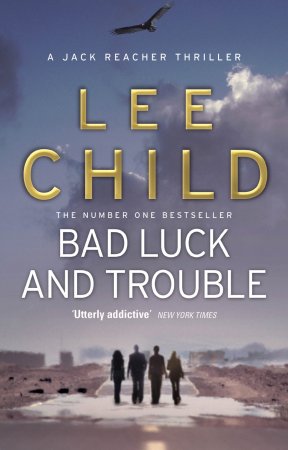 Bad Luck and Trouble
Bad Luck and Trouble 61 Hours
61 Hours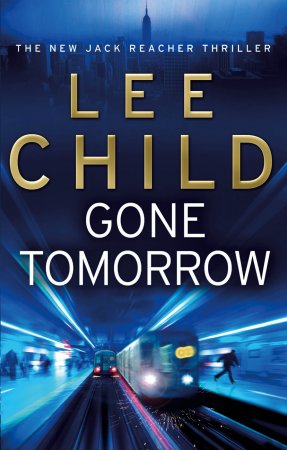 Gone Tomorrow
Gone Tomorrow Night School
Night School Personal
Personal Never Go Back
Never Go Back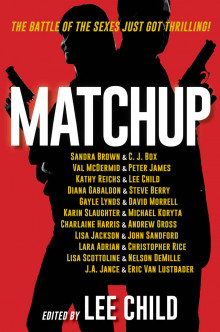 MatchUp
MatchUp A Wanted Man
A Wanted Man Not a Drill
Not a Drill Echo Burning
Echo Burning Small Wars
Small Wars Deep Down
Deep Down The Hard Way
The Hard Way The Sentinel
The Sentinel The Sentinel (Jack Reacher)
The Sentinel (Jack Reacher)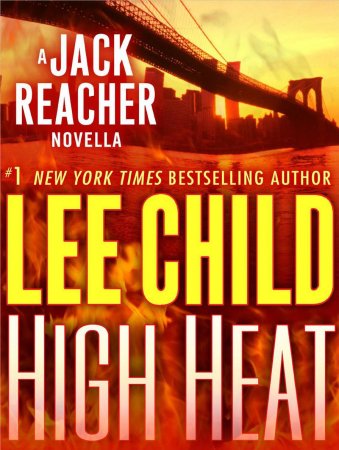 High Heat
High Heat Nothing to Lose
Nothing to Lose The Enemy
The Enemy The Affair
The Affair Second Son
Second Son Without Fail
Without Fail Too Much Time
Too Much Time The Hero
The Hero Blue Moon
Blue Moon The Christmas Scorpion
The Christmas Scorpion The Nicotine Chronicles
The Nicotine Chronicles The Fourth Man
The Fourth Man Deep Down_A Jack Reacher short story
Deep Down_A Jack Reacher short story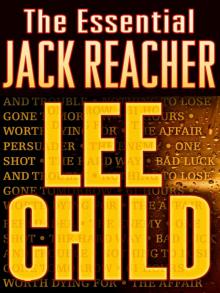 The Essential Jack Reacher 12-Book Bundle
The Essential Jack Reacher 12-Book Bundle Gone Tomorrow jr-13
Gone Tomorrow jr-13 High Heat: A Jack Reacher Novella (jack reacher)
High Heat: A Jack Reacher Novella (jack reacher) High Heat_A Jack Reacher Novella
High Heat_A Jack Reacher Novella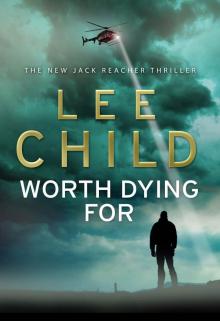 Jack Reacher 15 - Worth Dying For
Jack Reacher 15 - Worth Dying For Jack Reacher's Rules
Jack Reacher's Rules No Middle Name
No Middle Name 14 61 Hours
14 61 Hours First Thrills, Volume 3
First Thrills, Volume 3 Jack Reacher 01 - Killing Floor
Jack Reacher 01 - Killing Floor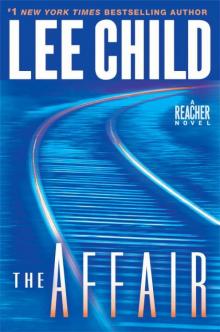 The Affair: A Reacher Novel
The Affair: A Reacher Novel FaceOff
FaceOff Good and Valuable Consideration
Good and Valuable Consideration Mystery Writers of America Presents Vengeance
Mystery Writers of America Presents Vengeance Jack Reacher 20 - Make Me
Jack Reacher 20 - Make Me Not a Drill: A Jack Reacher Short Story
Not a Drill: A Jack Reacher Short Story 17 A Wanted Man
17 A Wanted Man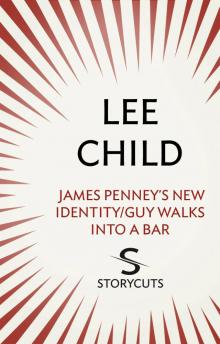 James Penney's New Identity/Guy Walks Into a Bar
James Penney's New Identity/Guy Walks Into a Bar Vengeance: Mystery Writers of America Presents
Vengeance: Mystery Writers of America Presents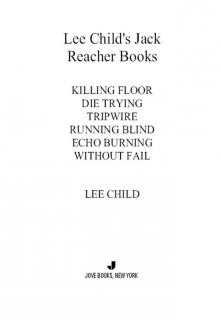 Lee Child's Jack Reacher Books 1-6
Lee Child's Jack Reacher Books 1-6 Killer Year
Killer Year Personal (Jack Reacher 19)
Personal (Jack Reacher 19) The Essential Jack Reacher 10-Book Bundle
The Essential Jack Reacher 10-Book Bundle First Thrills
First Thrills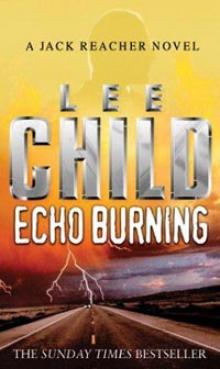 Echo Burning jr-5
Echo Burning jr-5 Good and Valuable Consideration_Jack Reacher vs. Nick Heller
Good and Valuable Consideration_Jack Reacher vs. Nick Heller A Wanted Man: (Jack Reacher 17)
A Wanted Man: (Jack Reacher 17) 23 Past Tense
23 Past Tense First Thrills, Volume 4
First Thrills, Volume 4 Small Wars_A Jack Reacher Story
Small Wars_A Jack Reacher Story